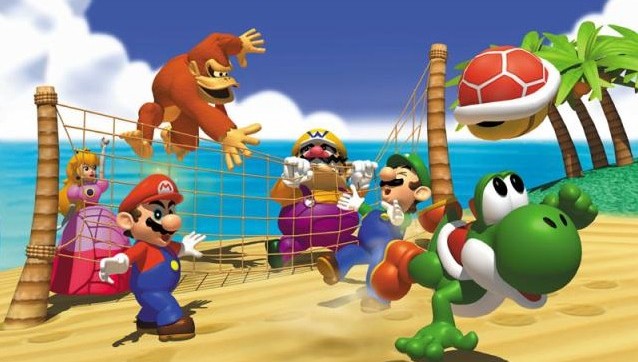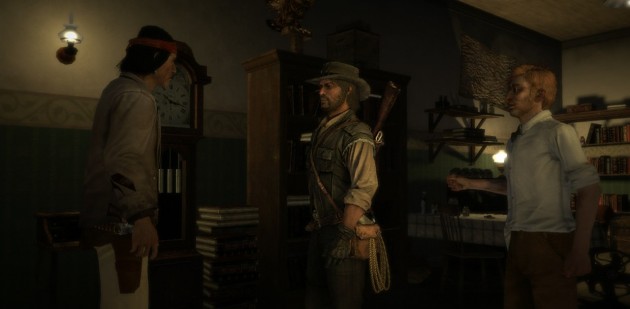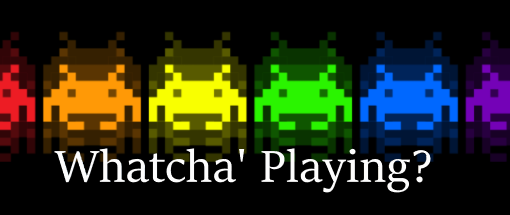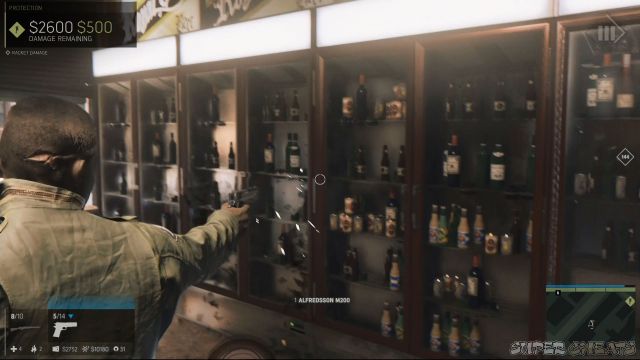I’ve been chatting with a friend about Metal Gear Solid V and the art of the sneak recently, and it made me think a little differently about what I wrote regarding combat avoidance back in the summer. We were talking about stealth first as a puzzle — discussing MGSV and Dishonored in the same breath, and about the challenge of learning patterns and finding ways in and around — but then we moved on to something else, something completely outside of what might be considered standard gameplay: just enjoying the scenery. Learning the world, and experiencing it, especially when he could do it without being noticed. He said he enjoyed just riding around, checking things out, maybe exploring an area and doing a side thing, and then just riding along a little more, scoping everything. Leaving no trace when he accomplished something. Leaving only footprints, say.
I asked him: Doesn’t that get boring after a while? I was thinking about my habit of focusing so many side quests that every game becomes Final Fantasy VII if you fight Sephiroth after taking out all the Weapons: everything is anti-climactic once you’ve become the very biggest bad (which makes me appreciate games with level caps and scalable enemies, for sure), but my friend’s perspective was a little different — that maybe it really was just about the journey. Just the experience of being in a game world, alone, without really engaging in combat, and thinking about everything that comes with that experience.
I kept thinking about that conversation, about the moments of scenery that make you catch your breath, about the light on a field or a window, about just feeling immersed in a world, especially when you can do it without the distraction of combat encounters or story bumps. I thought about firing up Dishonored, or starting Fallout 4 (I still haven’t!), or any number of games, but instead I chose a franchise I don’t have much love for: Assassin’s Creed. Specifically, I turned on Black Flag, picked up an old save, and just spent half an hour doing absolutely nothing in Havana. I climbed. I looked. I plopped into some convenient hay. I checked out the textures of buildings and rooftops. I looked out into the distance. I wandered. Something was brewing in me, a question, but not one quite formed, so I turned to a wholly different kind of game: Don’t Starve, or specifically, the world I’d just recently begun in Don’t Starve Together with my partner. We’d only uncovered the tiniest corner of the map, so I turned on god mode so as not to get eaten and just walked.
That experience was immediately different, of course; this wasn’t a city, but just so much empty space. Oh, certainly, there were things – a herd of beefalo, some sleeping mer, rabbits that squealed and dodged out of my way, even a thickly grown forest, so dense my little bobbing avatar was difficult to see for a moment. But there was also so much emptiness, space I could fill if I lasted hundreds of days, maybe, and if I wanted to build in a rocky expanse of nothing. Potential, in theory, but not really, because I wouldn’t build in even a fraction of those spaces. Some I would visit only once, and never again. Was that different than those buildings in Havana, in Black Flag? I might admire a tile roof from a higher tile roof, might even run across it, but what was that space? And if I wasn’t using it as designed, was I even playing?
Was I playing when I ran around aimlessly in Don’t Starve? Sure, I was uncovering the map, but I wasn’t paying attention to that. Nor was I thinking about strategy or anything else in my foray into Havana in Black Flag. I was a tourist, simply admiring the scenery, though still making some game-like moves (avoiding, hiding); in DST, I was an explorer, just scoping things out, but collection nothing, and not interacting with the land except to walk it. Was I playing then if I use that information? What if I roll back the server to where we’d previously left off, with only a sparse camp and a few screens of land explored? If that time was essentially just wasted bumbling about?
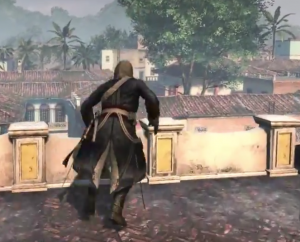 Is experience enough for play? After all, these worlds are built to be roamed, whether they’re simpler, random worlds like those in DST or more calculated worlds, carefully planned and designed, as with Black Flag or Fallout 4 or MGSV. I keep thinking of my friend on his horse. Is it more in line with play if he takes on side challenges as he encounters them, and less like play if he goes around optional encounters in favor of just riding a little further, chilling with the D-Horse, simply trotting onward to see what’s over the next ridge, and the next? Or are we meant to eventually get around to doing something other than just enjoying the view?
Is experience enough for play? After all, these worlds are built to be roamed, whether they’re simpler, random worlds like those in DST or more calculated worlds, carefully planned and designed, as with Black Flag or Fallout 4 or MGSV. I keep thinking of my friend on his horse. Is it more in line with play if he takes on side challenges as he encounters them, and less like play if he goes around optional encounters in favor of just riding a little further, chilling with the D-Horse, simply trotting onward to see what’s over the next ridge, and the next? Or are we meant to eventually get around to doing something other than just enjoying the view?
Open world games allow us to craft our own experiences in many ways, choosing which aspects of quests and challenges to take on and allowing that kind of wandering. That’s part of play, but usually some forward motion is implied when we talk about play, some accomplishment. Are we accomplishing as we wander? What if we go no further than that?
But other, more linear games, require completely different interactions from us. What happens to play within a more rigid system? Games like The Beginner’s Guide have very little allowance — that’s what got me thinking about the boundaries and definitions of play in the first place. TBG is a game in which you might as well be on rails, considering how guided the experience is. Other narrative-heavy games may not have quite the same structure, but there are some similarities to be drawn. We can adjust the characters in a game like Life Is Strange, for instance, even cut out whole sections of story, but in the end, we’re always faced with the same choice, always guided to the same conclusion.
How do all these different intersections of story and experience and learning and interaction all come together to form the same concept? More and more lately I’m wondering how this can all be play, while so many other things are also play, though they all look as different as the gamers sitting at the keys or holding a controller. That difference, then, that vast potential for crafting so many varied experiences: is that part of what makes a game a game, and what makes play?

